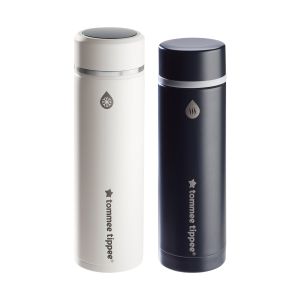
This is a demo store. No orders will be fulfilled.
Subscription orders can be cancelled at anytime. Free delivery on all subsequent subscription orders. Find out more about subscriptions.
They’re easy and fuss free
Your products are automatically sent to you
You save up to 10% when you sign up for a subscription
You can cancel at any time
Swaddling is simply wrapping up your baby gently, so they can���t move their arms. To your baby being swaddled can replicate the feeling they had of being in the womb.
Swaddling gives babies a sense of comfort and security and has been proven to improve the quality of sleep in young babies. It helps to reduce the startle or Moro reflex that can disturb your baby���s sleep.
When swaddling, you should only wrap baby���s body and not their neck or head.
Yes, swaddling is safe if you follow safe sleeping and hip-friendly swaddling guidance for babies. Safe baby sleeping advice is to always lay your little one down to sleep on their back and avoid front or side positions for sleep, especially if your baby is swaddled.
You should stop swaddling your baby when they show the first signs of rolling over.
The safest way to swaddle is to do it from birth rather than suddenly introduce swaddling at the vulnerable age of three months when the SIDS risk is highest.
Not all babies are swaddled of course, but there are a few circumstances when swaddling can be helpful...
All our swaddles can be machine washed at 40��C. They can be hung out to dry or tumble dried on a low setting. As with all cotton goods, we have designed our swaddles to allow for up to 5% shrinkage. If your child has any allergies and you wish to wash your swaddle at 60��C, you should allow for a little more shrinkage.
We recommend that you wash dark colours separately for the first few washes. We also recommend that you wash your swaddle with a detergent that is free from bleaching agents in order to retain the original colours.
Every baby is different and there is no set time when you should stop swaddling. Many babies enjoy being swaddled for several months whilst others will become frustrated by their restricted movement from as early as two to three months.
The most important factor to consider is safety and your baby���s movement. Swaddled babies should not sleep on their front, so when your baby is able to roll onto their front, you should stop swaddling. You should be especially cautious when they are not yet able to roll back onto their back.
Your baby might struggle to go to sleep when you get first rid of the swaddle. It will feel strange to them if they are used to falling asleep easily with it on. Indeed, you may have even noticed them becoming sleepy as soon see their swaddling cloth.
The main key to helping your baby sleep without a swaddle is not to allow swaddling to become your baby���s only sleep trigger. From an early age, you should introduce some other sleep signifiers at bed time which will still let them know that sleepy time is coming and will help them to settle even though the swaddle has gone. These sleep triggers should include:
For a few days before planning to remove the swaddle completely, you should stop swaddling your baby���s arms and just wrap their legs and body up to chest height. At the same time, you should gradually loosen the tension of the swaddling.
If you feel that your baby misses the feeling of pressure from the swaddle, you place your arm gently across their upper body. As they start to settle, you can then take your arm away. And although it's possible that you might have a night or two of less settled sleep, your baby will soon get used the change.